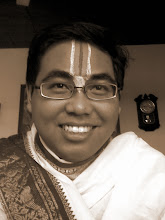After the reign of Raka i Wawa or Sri Vijayalokanathottunga (924 – 929 ce), the center of civilization and great kingdom of Javanese Hindu resettled on East Java by Pu Sindok or Ishanottungadeva, the vansakarta of Ishanavansa. The whole Nusantara came to her unique form of Vedic and Agamic based culture and also got its shape influence by Buddhism. The pure practices of Vaishnavism, Saivism, and Tantric Buddhism only found their place mainly in aristocracy. The common people prefer their more liberal syncretic form. By faith or by blood tie, the Javanese aristocrats and Brahmins were connected to their Vaishnava ancestors of India, so it was rather difficult for them to leave the practices, unlike the common peoples.
Then we came to the end of Ishanavansa during the reign of Kritajaya of Kadiri. Kritajaya was defeated by Rangarajasa, his vassal, a king that came from intermarriage of a native girl with Brahmin. He was vansakarta of the new Rajasa clan and built the kingdom of Singhasari. Thus end the great influence of Vaishnava Rajas from the Varman of Kalimantan and West Java, Sanjayas, and Ishanas. Rangarajasa probably has more inclination toward Saivism or Buddhism rather than Vaishnavism, he called himself Girisha-atmaja (Siva’s Son). Rajasa himself married one Ken Dedes, a daughter of famous Buddhist master, Pu Purva of Panavijen. She was forcibly married by a vassal king of Tumapel, before Rajasa murdered this former husband of her and took her as his consort. This word Girisha also could have same meaning with Sailendra. Was Rajasa actually a descendant of Sailendravansa? Was that mean he wants to resurrect the pure blood of Sailendravansa, once the great rulers of Java? We don’t have any information other than mere speculation. But his greatest descendant, Kritanagara was practicing full-fledged Tantric Buddhism perhaps Kalachakrayana, the same patronized by Sailendra kings.
Previously, Kritanagara tried to follow the politic similar as intermarriage between Pikatan-Pramodavardhani, of Sailendra and Sanjayavansa, for stability of power. Though Kadiri once was defeated by Rajasa, but the descendant of Ishanavansa-Sanjayavansha was continued by king of Kadiri, who now turned to became vassal of Singhasari. So Kritanagara who has no son, got his daughters married to two princes. One was Vijaya from his own Rajasavansa and the other was Ardharaja from Kadiri, son of Jayakathvanga, thus from Ishanavansa. One day Kadiri organized rebellion toward Singhasari and was tried to again occupy the sovereign power of all Java by war. Kritanagara was killed in the palace without knowing anything about Kadiri’s attack. The chronicle of Bilvatikta, Nagarakritagama, describes the king as performing Ganachakra-puja at that time. But that didn’t take a long time for Vijaya, by genius war strategy, to take the throne forever from Jayakathvanga. This was almost a total defeat, which swept away the strategic influence of Ishanavansa from Nusantara. Thus end the prowess of once great dynasty of Vaishnava kings in Indonesia.
Vijaya then removed the capital of Java from Singhasari, his father in law’s citadel, to Trik, where he built the magnificent kingdom of Bilvatikta or Majapahit. This was the beginning of a greatest empire in Nusantara and Suvarnabhumi. Bilvatikta grow as a wonderful unifying force in the South Eastern region of Asia under the reign of Rajasanagara (Hayam Wuruk) and his prime minister, the great Gajamada. As a great nation, Bilvatikta formulate religion of the country. This was a syncretism of Saivism and Tantric Buddhism, called the Saiva-buddha-agama (Agama Siwa Buddha). At the time of her pristine glory and her fall under Islamic force, the Saiva-buddha-agama became national religion of Bilvatikta. The literary work of this religious system was the book of Sutasoma. The saying of this book about unity of Saivism and Buddhism, which also applicable to other differences, became national slogan of The Republic of Indonesia. It was jinatva-sivatva tunggal, bhinneka tunggal ika, tan hana dharma mangrwa. (Buddha and Siva are One. It was different but it was one. There is no duality in dharma). The phrase bhinneka tunggal ika : It was different (bhinna). It was one (tunggal). It was unity in diversity.
So Nusantara was a land of great Vedic kings and Brahmins. She has such a wonderful spiritual legacy. Bali and Java deeply influenced by Veda-dharma, and any local customs, ceremonies, social etiquette, was Hindu by nature and of Vedic origin. She has developed the most refined Vedic way of life and made it became her own culture. Anything non Vedic actually was foreign to her.
Tuesday, February 24, 2009
Subscribe to:
Post Comments (Atom)













No comments:
Post a Comment